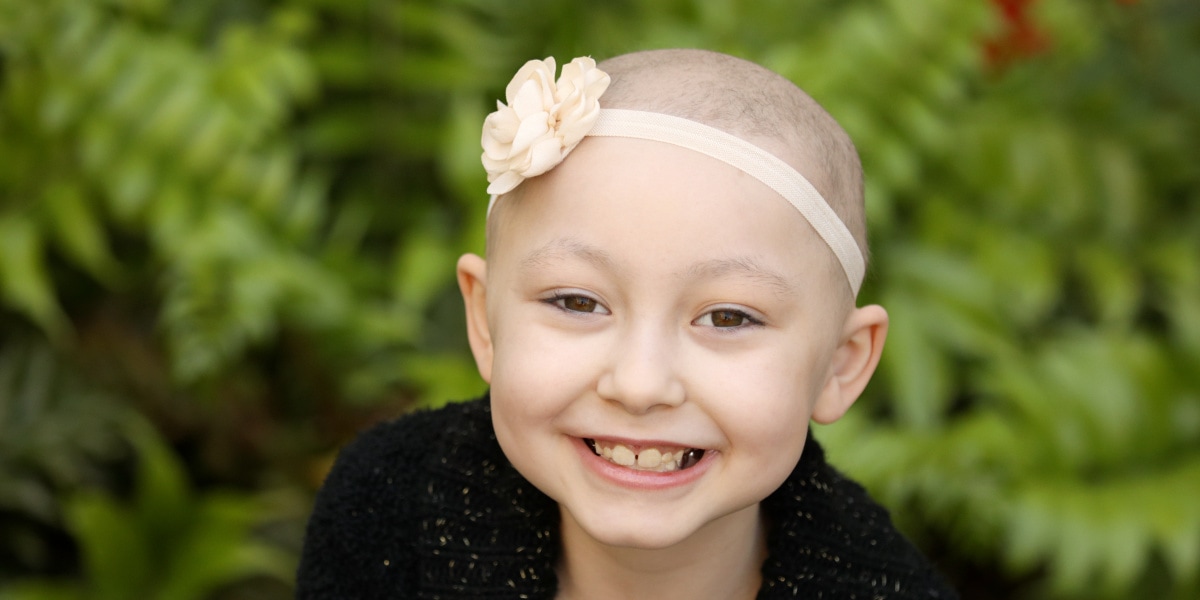Volunteers are the heart of Rally's mission!

It’s no secret that adults get cancer. But children get cancer, too — and it’s more common than you might think. Worldwide, 300,000 kids are diagnosed with cancer every year. And in the U.S., 1 in 285 children will be diagnosed with cancer before they turn 20.
There are many types of childhood cancers. Some cancers are more common in children than adults, and there are some cancers that only children get. Here’s a look at some of the most common childhood cancers.
The most common childhood cancer is leukemia. Leukemia is a blood cancer where the bone marrow produces too many blood cells, and the blood cells don’t function properly.
There are several types of leukemia. The most common type of leukemia in children is acute lymphoblastic leukemia, or ALL. Thanks to childhood cancer research, about 90% of children diagnosed with ALL will survive.
The second most common leukemia in children is acute myeloid leukemia, or AML, which tends to be more aggressive and difficult to treat.
Other types of leukemia in children include biphenotypic leukemia, juvenile myelomonocytic leukemia (JMML), and chronic leukemias.
The second most common childhood cancer is brain cancer. Brain cancer can form in any part of the central nervous system, which includes the brain and spinal cord.
The most common brain cancer in children is medulloblastoma. Medulloblastoma is a tumor that starts in the cerebellum, the part of the brain responsible for balance and tasks like walking and writing. Adults can get medulloblastoma too, but it is much more rare.
Other types of brain cancer in children include glioblastoma, astrocytoma, atypical teratoid rhabdoid tumor (ATRT), ependymoma, primitive neuroectodermal tumors (PNET), diffuse intrinsic pontine glioma (DIPG), and more.
Because of its location in the central nervous system, brain cancer can be very difficult to treat. It has the highest mortality rate of the childhood cancers.
Lymphoma, like leukemia, is a type of blood cancer. More specifically, lymphoma is cancer of the lymph nodes. The lymph nodes are part of the immune system, which helps the body fight infections and diseases.
Lymphomas can be grouped into one of two types: Hodgkin lymphoma and non-Hodgkin lymphoma. Hodgkin lymphoma can be diagnosed at any age, but it is most common in teens and young adults, and in older adults. Non-Hodgkin lymphoma is more common in younger children. Non-Hodgkin lymphoma in children tends to be more aggressive than in adults, but it also tends to respond better to treatment.
Neuroblastoma is a cancer that forms in the nerve tissue. Sometimes it can develop in babies before they are born. It is most common in babies and children under 5, and it is rarely diagnosed over the age of 10.
Neuroblastoma usually starts in the abdomen but it can be found anywhere in the body. It is the second most common solid tumor in children (after brain tumors).
Bone cancer can be diagnosed at any age, but it is most common in teens and young adults, and slightly more common in boys than girls. The two main types of bone cancer are osteosarcoma and Ewing sarcoma.
Osteosarcoma is the most common bone cancer in children. It is usually found in the upper arm or the long bones of the leg. Ewing sarcoma is usually found in the ribs, pelvis, upper arm or thigh.
Wilms tumor is a type of kidney cancer. It is most common in young children ages 3 to 4.
Wilms tumor tends to respond well to treatment, especially if it’s caught before it has spread to other parts of the body. Today, thanks to progress in childhood cancer research, over 90% of children diagnosed with Wilms tumor will survive.
Retinoblastoma is a cancer of the retina, the part of the eye that detects light and color. It is most common in children under age 3.
Retinoblastoma can occur in one or both eyes. Children with retinoblastoma in both eyes likely have a germline (hereditary) mutation which makes them more likely develop other types of cancer.
There are still many other types of childhood cancer, like soft tissue sarcomas, thyroid cancer, liver cancer, germ cell tumors and more. No two childhood cancers are the same — and even cancers that share the same name can behave completely differently in different patients.
We still don’t know what causes most childhood cancers. And while doctors have gotten much better at treating many types of childhood cancer, there are still some cancers which no child has ever survived.
That’s why childhood cancer research is so important. And the good news is, there are researchers working right now to find better treatments and new cures for all kids with cancer.
Learn more about the research that Rally Foundation funds and see how you can help.